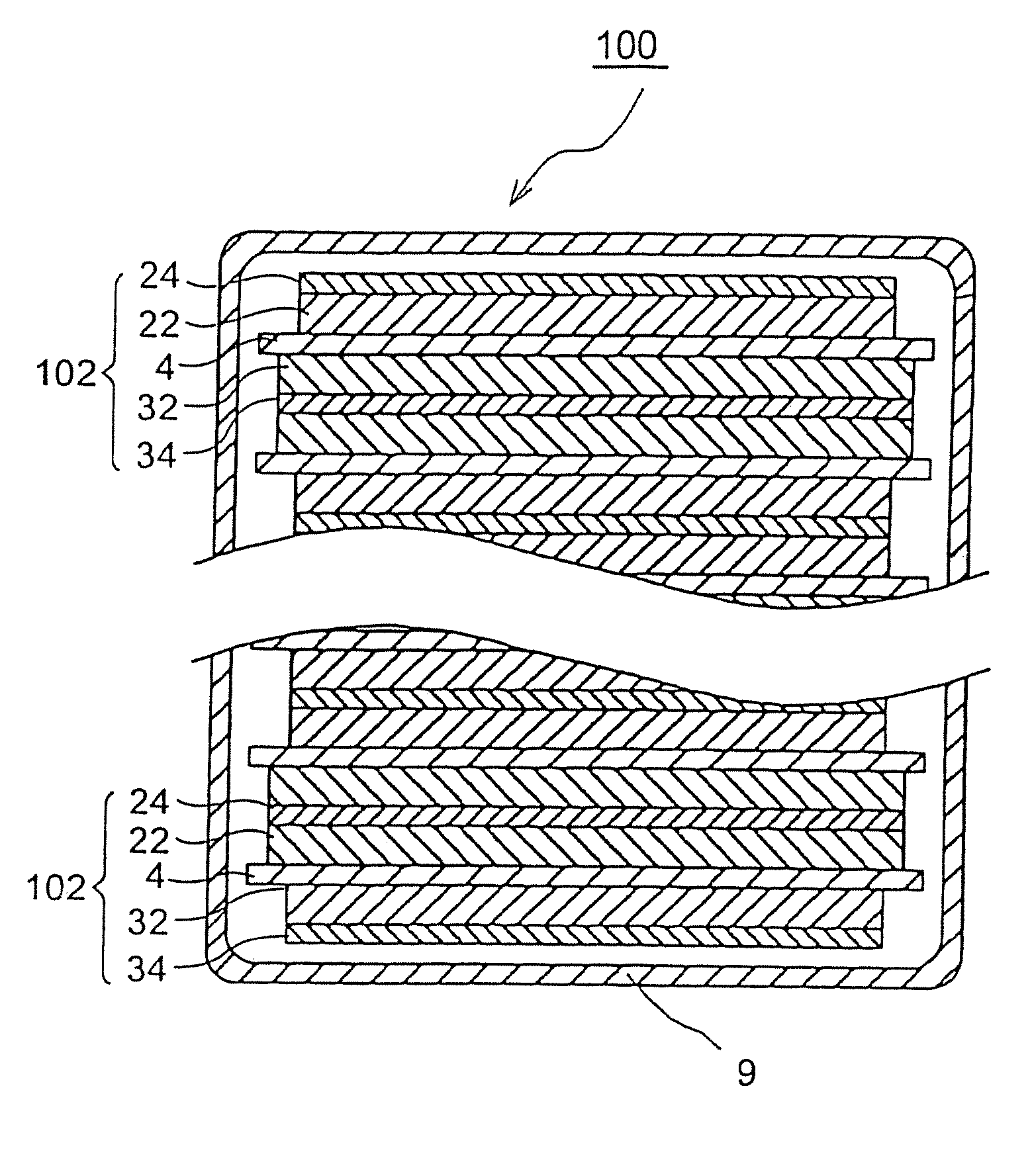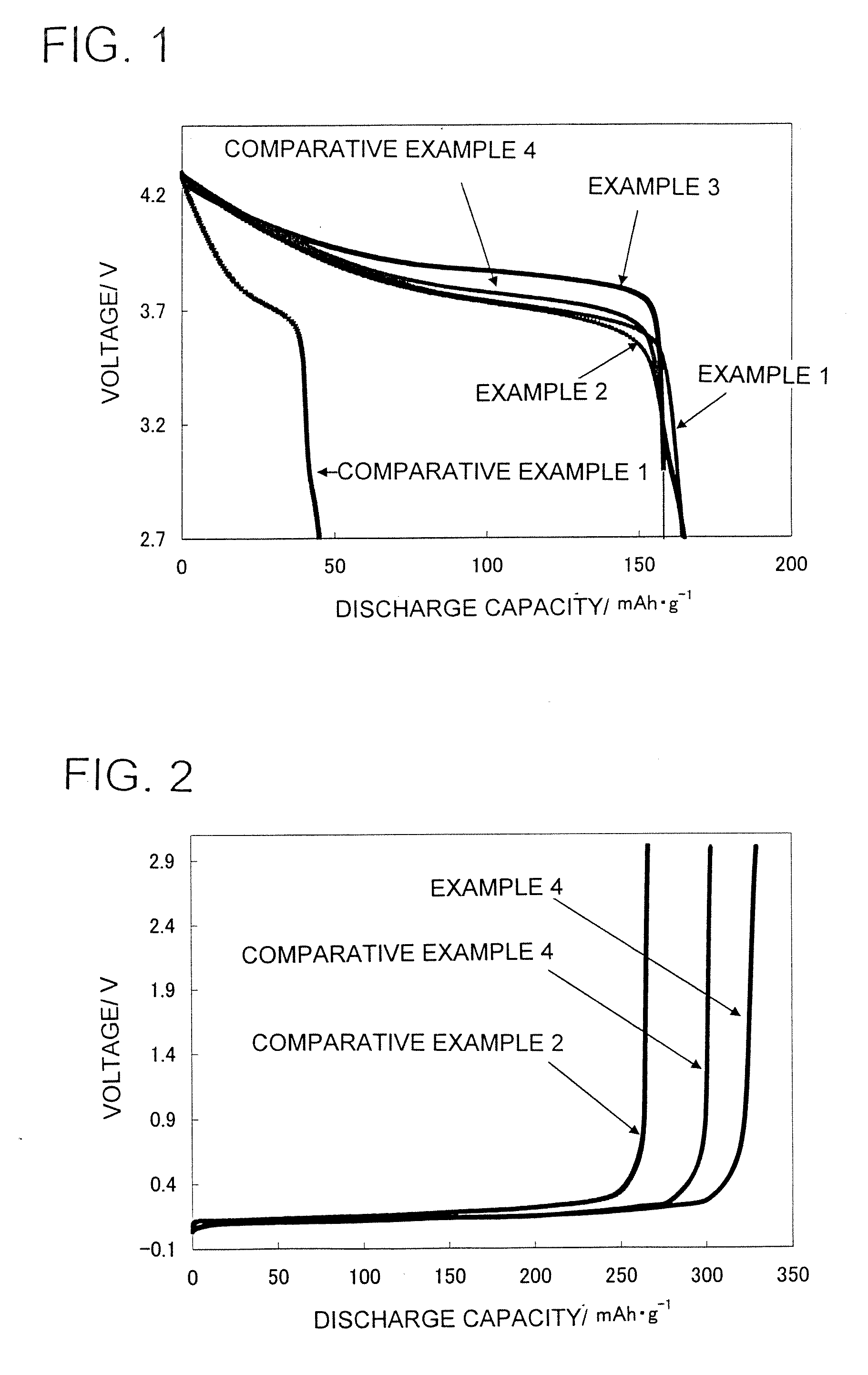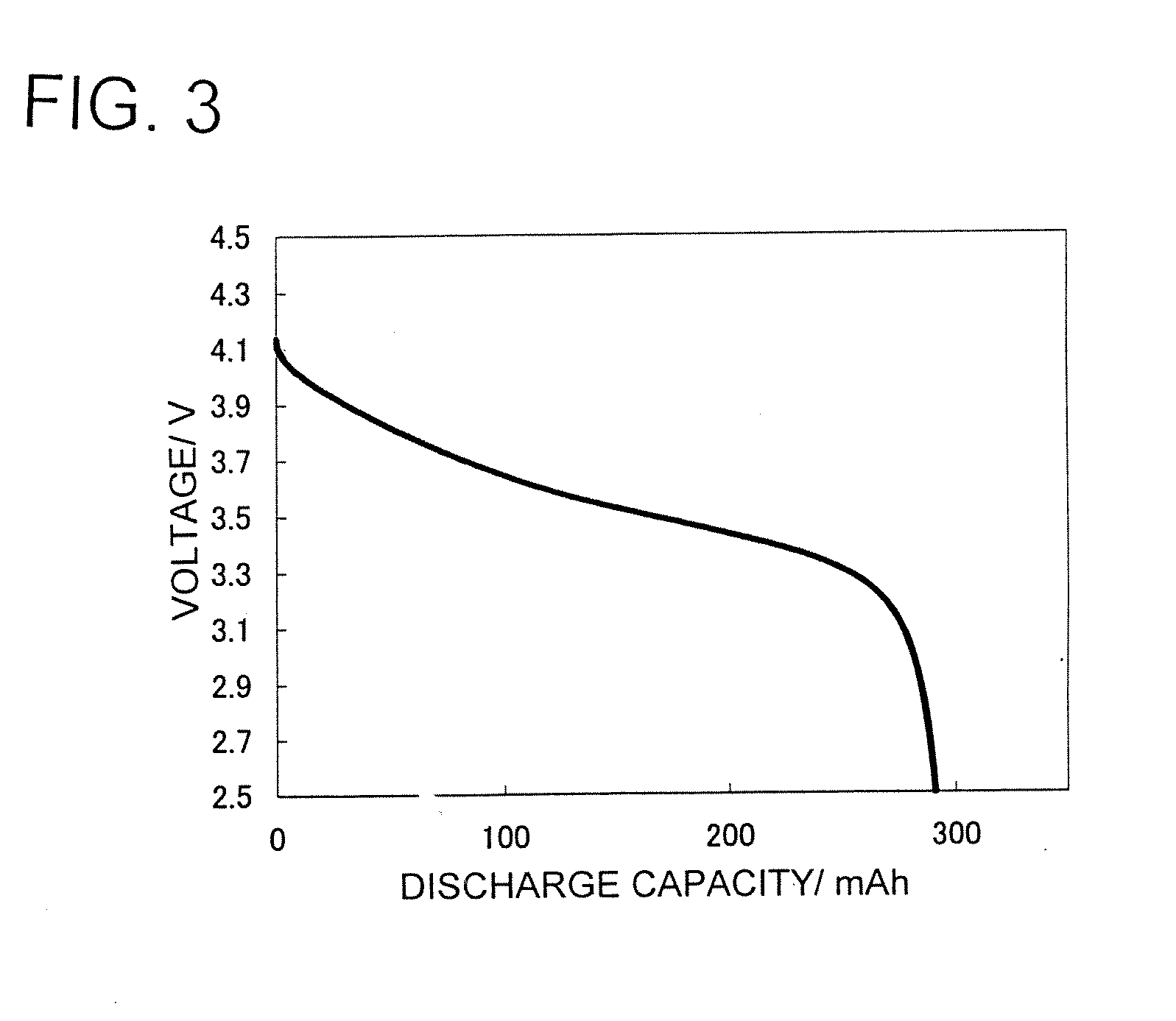Lithium secondary battery
a secondary battery and lithium oxide technology, applied in the direction of non-aqueous electrolyte cells, cell components, sustainable manufacturing/processing, etc., can solve the problems of short electronic conduction of metal oxides, adversely affecting the adhesion between current collectors and active materials, and affecting the electrical conduction and adhesion of current collectors, etc., to achieve a wider area of application, increase the output density, and increase the energy density
- Summary
- Abstract
- Description
- Claims
- Application Information
AI Technical Summary
Benefits of technology
Problems solved by technology
Method used
Image
Examples
example 1
Preparation of Composite Particles for Positive Electrode
[0060] The positive electrode composite particles were prepared using a composite metal oxide of the formula:
LixMnyNizCo1-y-zOw
wherein x=1, y=0.33, z=0.33 and w=2 as a positive electrode active material in an amount of 90% by weight, acetylene black as a conductive agent in an amount of 6% by weight, and polyvinylidene fluoride as a binder in an amount of 4% by weight. To impart conductivity to the composite metal oxide, a treatment was carried out on the composite metal oxide to bind acetylene black and polyvinylidene fluoride to the surface thereof prior to formation of an electrode.
[0061] More specifically, acetylene black was dispersed in a N,N-dimethylformamide (DMF) solution having polyvinylidene fluoride dissolved therein. The solution (containing 3% by weight acetylene black and 2% by weight polyvinylidene fluoride) was sprayed to the composite metal oxide powder in the form of a fluidized layer in a vessel where...
example 2
[0063] Conductive treatment and electrode preparation were carried out as in Example 1 except that the amount of positive electrode active material laden was 100 mg / cm2.
example 3
[0064] Conductive treatment and electrode preparation were carried out as in Example 1 except that LiCoO2 was used as the positive electrode active material and the amount of active material laden was 60 mg / cm2.
PUM
| Property | Measurement | Unit |
|---|---|---|
| particle size | aaaaa | aaaaa |
| particle size | aaaaa | aaaaa |
| particle size | aaaaa | aaaaa |
Abstract
Description
Claims
Application Information
 Login to View More
Login to View More - R&D
- Intellectual Property
- Life Sciences
- Materials
- Tech Scout
- Unparalleled Data Quality
- Higher Quality Content
- 60% Fewer Hallucinations
Browse by: Latest US Patents, China's latest patents, Technical Efficacy Thesaurus, Application Domain, Technology Topic, Popular Technical Reports.
© 2025 PatSnap. All rights reserved.Legal|Privacy policy|Modern Slavery Act Transparency Statement|Sitemap|About US| Contact US: help@patsnap.com



